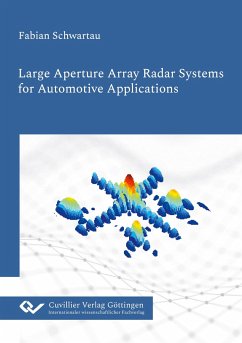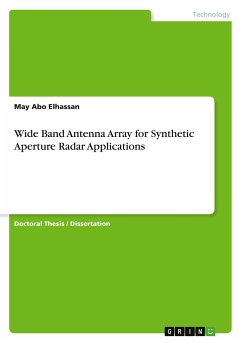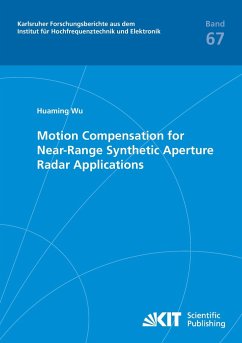The automotive industry is pushing towards highly assisted and even autonomous driving cars. To gather a more precise and reliable representation of the car¿s surroundings, the sensors and the signal processing are improving over time and are a subject to continuous research. One essential sensor is the radar, which is robust and reliable even in harsh environmental conditions. The primary downside of a radar is its low resolution compared to lidar or camera-based systems. To mitigate these drawbacks the resolution of radar systems has to be improved. The bandwidth has to be increased to improve the range resolution, and the aperture has to be increased to improve the angular resolution. Primarily caused by the automotive industry, fully integrated radar on chip solutions are now available and allow the construction of more complex radar systems. These radar on chip devices lay the foundation for radars that fulfill the requirements of increased resolution for future systems. Although this work is focused automotive applications, most ideas, concepts, and calculations are also applicable to other fields. Similar systems may be used in the security sector, quality control in industrial processes, or gesture detection, to name a few examples. This thesis shows the development of a conceptual future radar system for automotive applications. The focus is on providing a large antenna aperture to achieve the required high angular resolution. Two genetic algorithms are developed to optimize the antenna array for a good side lobe level while providing high angular resolution. Two demonstrators are built to implement certain aspects of the proposed radar system and prove the general concept viable. The first demonstrator features a large aperture with a limited side lobe level and is using a modular approach. The modules are synchronized with a radio over fiber system. The second demonstrator uses the previously proposed antenna array, which is implemented with a synthetic aperture radar approach. The system¿s capabilities in a real scenario are demonstrated, and the reconstruction of a high-resolution three-dimensional image from the captured data is shown. As larger arrays for radar systems automatically come with higher manufacturing tolerances, larger thermal expansion, and other negative impacts on the actual antenna positions, this work also analyzes the impact of such imperfections. Additionally, an algorithm is proposed, which can estimate the actual antenna displacement during operation. Therefore, the system is capable of compensating for most of the negative effects.
Hinweis: Dieser Artikel kann nur an eine deutsche Lieferadresse ausgeliefert werden.
Hinweis: Dieser Artikel kann nur an eine deutsche Lieferadresse ausgeliefert werden.








